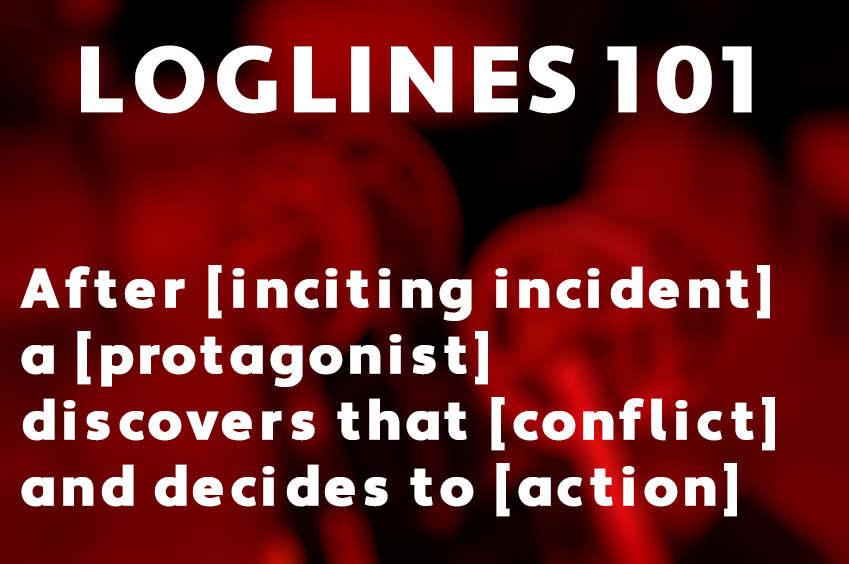
27 Tips To Write A Killer Logline
A Logline is a tool used to sell your idea. The screenplay starts with the logline and is the first to be considered in the production company read by industry professionals. Knowing how to write a logline is an essential skill to have before writing a script as the logline is a short introduction of the movie under 20 minutes. So writing a logline is an art in of itself to sell the screenplay. Here in this article, you will learn 27 tips to write a killer logline and how to break down a logline to understand what makes a good one.
What Is A Logline?
Logline is a two sentence summary of the movie that explains the central conflict of the story and attracts the reader. So if someone asks about your story, you respond with a logline. You can learn how to create a great logline for the story and get the reader’s attention; loglines must be concise and focus on the central plot. A few terms may resemble each other and confuse you, but let’s find out how they work with similar meanings.
Logline versus Synopsis
Logline summarizes your screenplay, whereas synopsis is a beat for beat retelling of your script story. Whether you are crafting a documentary logline or loglines for short films, it will never be the same as a synopsis, so both are different.
Logline versus Tagline
When the logline tells about the story, a tagline makes the reader excited to always play on its catchphrase or slogan, especially as used in advertising or punchline of the story.
1. Create Strong Protagonists
First on the list of 27 tips to write a killer logline is to create strong protagonists. The first section of your logline should consist of your movie insight such as ‘A hot-headed anchor’ and ‘A beautiful assassin.’ You must have a great sense of the main character, and it’s important to focus on that. It must be unique. Typically, two conflicting adjectives of the protagonist can grab the reader’s attention.
Don’t use character names
While writing a logline, you should keep in mind that it must not contain a character’s name because no one knows who the person is. Describe the associated information without ever mentioning a name. The characters in your mind are essential to explain who they are.
2. The Best Loglines Are Goals
When you start writing a screenplay and focus on writing a logline, you will realize character studies are fun but are defined by actions. The logline shows what your character wants and how she/he will achieve goals. For example, if you say ‘A man sets out to build a robot,’ it doesn’t show a specific reason or goal while saying ‘A man sets out to build a robot to win a competition.
It will provide a competitive thought in mind and assure the screenplay’s story with the protagonist’s success.
Use the active voice
It would be best to use the active voice tone when things happen that are out of the character’s control. So the passive events can happen as inciting incidents and the character’s reaction shows they had nothing to do with it.
3. Irony Is Your Friend
Logline can consist of little irony as it’s a bedrock of any comedy movie. Loglines make the main character’s journey the hardest possible. Your story begins to shape when two personalities pair together and place them in a fish out of water scenario.
4. Movie Loglines Should Have Stakes
Most loglines consist of a stake, such as will a bomb explode? How will the dastardly villain die? Strong stakes coupled with a goal can increase the desire to know what will happen in the story. You can imagine the movie ‘Speed’s logline. It’s an old 1994 film that has a logline with big stakes.
Try using a logline generator
You can also use a generator to create a logline, but not the final product of the story, so a generator can give a direction for a character you want to write about. It is helpful when you have enormous ideas, and you are stuck in them. A generator will leave you with something exciting.
5. The Best Loglines Break The Rules
Last on the list of 6 tips to write a killer logline is that the best ones break the rules. You can get a producer’s help or assistance to write the exact to-the-point loglines, while the tips above let you create a structure and direction to make the conventional movie. Such as ‘The Pirates of the Caribbean’ logline states character names but with careful quotation marks around the word Captain. You can check online how it twists the end into a sentence.
How to find the essence of movie loglines?
The easiest way of writing a logline is to have the film’s flavor, so if you want to flavor the script, then visualize the story and imagine how it will show on the screen. You must know how to use storyboards. It will make the process easier.
6. Focus on the conflict
Your logline should introduce the main conflict that drives your story. What is the character’s goal? What obstacles are standing in their way?
7. Start with the basics
First, identify the genre of your story and the main character(s). These two elements will lay the foundation for everything else in your logline.
8. Introduce the conflict
Your logline should introduce the main conflict that drives your story. What is the character’s goal? What obstacles are standing in their way?
9. Keep it short
Remember, a logline is only one sentence. You want to be as concise as possible while still conveying all of the essential information about your story.
10. Avoid clichés
Steer clear of overused phrases and clichés that will make your logline sound generic. Instead, focus on specific details that will make your story stand out.
11. Make it interesting
Your logline should be interesting and engaging, with a hook that will grab the reader’s attention from the start. Remember, you want them to be intrigued enough to want to read more!
12. Polish it up
Once you’ve written your logline, take some time to revise and polish it until it’s as good as it can be. This is a key piece of your story that should be given the attention it deserves.
13. Practice, practice, practice
The more you write loglines, the better you’ll get at it. The more you hone your skills, the easier it will be to create a logline that accurately reflects your story and captures the reader’s attention.
14. Get feedback
Once you’ve written your logline, get feedback from others. Ask them what they think about the story, the characters, and the conflict. What stands out most to them? Are there any elements that need clarification?
15. Edit and refine
Keep editing and refining your logline until it’s as good as it can be. This is a key piece of your story that should be given the attention it deserves.
16. Use a formula
If you’re struggling to come up with a logline, try using a formula to help you get started. There are many different formulas out there, so find one that works best for you and stick to it.
17. Be concise
Remember, a logline is only one sentence. You want to be as concise as possible while still conveying all of the essential information about your story.
18. Make it relatable
Your logline should be relatable and understandable, with characters and conflicts that readers can easily connect to.
19. Be specific
Steer clear of overused phrases and clichés that will make your logline sound generic. Instead, focus on specific details that will make your story stand out.
20. Appeal to emotions
Your logline should appeal to the emotions of the reader. What is the story about? What are the stakes? What will the reader feel by the end of the story?
21. Use strong language
The language in your logline should be powerful and evocative, with a strong hook that will grab the reader’s attention from the start.
22. Take time to perfect it
The more you write loglines, the better you’ll get at it. The more you hone your skills, the easier it will be to create a logline that accurately reflects your story and captures the reader’s attention.
24. Have fun with it
Don’t take the process of writing a logline too seriously. Have fun with it and experiment with different ways of expressing your story. The more creative you can be, the better.
26. Be yourself
There is no one right way to write a logline. Be creative and experiment with different ways of expressing your story. The most important thing is to be true to your own voice and style.
27. Trust your instincts
Finally, on the list of 27 tips to write a killer logline is to trust your instincts. If something doesn’t feel right, trust your instincts and make the changes you need to make. There is no one right way to write a logline, so go with what feels best for you and your story.
How To Write A Logline That Kills
Follow the procedure, and you will get the most attractive and well-written logline of the script. It includes describing the protagonist with strong adjectives, giving your protagonist a clear goal, using irony, increasing the stakes, and not being afraid to break convention. The best loglines need lots of experimenting. It takes multiple drafts to create a great logline. When you finish all these, you will have a logline you will be excited about or you can use software online to write the script’s logline.
These tips above gives you an option to write the script’s logline by going through this writing process and teaching you the industry-standard for crafting the perfect logline. Only the professionals know how to utilize this method and benefit from it.

Conclusion
In the above article, it has explained 27 tips to write a killer logline, along with the details and requirements. You can either try to do this on your own or get online software to generate the logline for your story. But it won’t be a final verdict; you have to move it to the finish line in conjunction with your story.
Leave A Comment
As you know, this site is dedicated to helping screenwriters. To help out our fellow screenwriters, leave a comment to make the content easier to find.
Related:
- 10 Screenwriting Books That Beginners Should Read
- Should Screenwriters Wear Blue Light Glasses?
- Do You Need A Degree For Screenwriting?